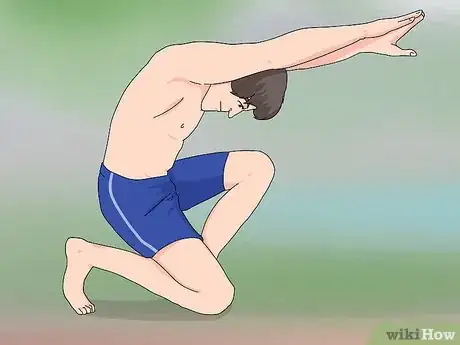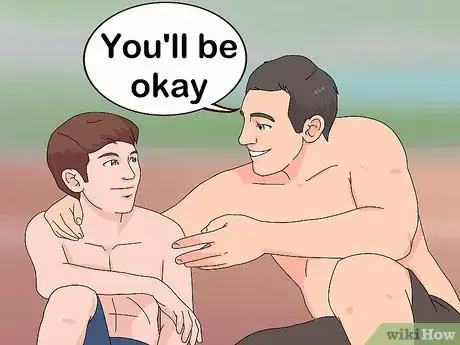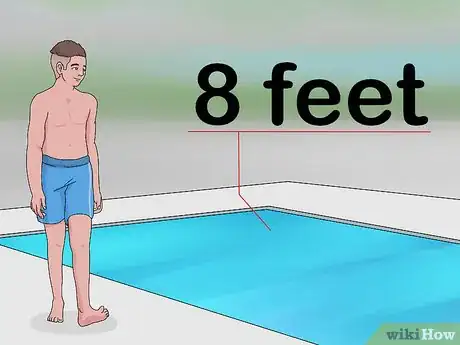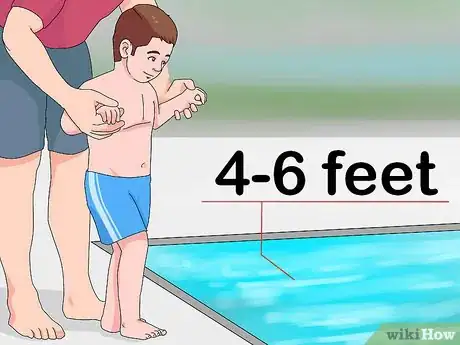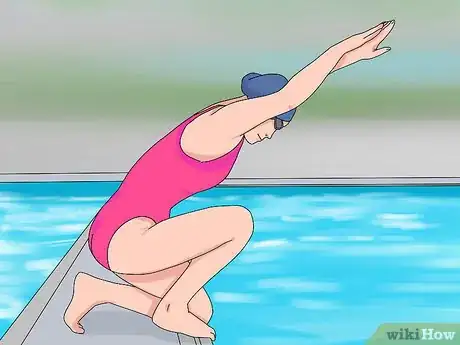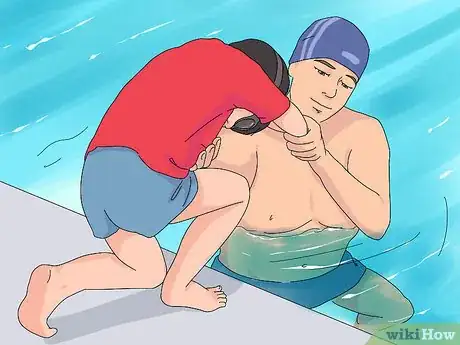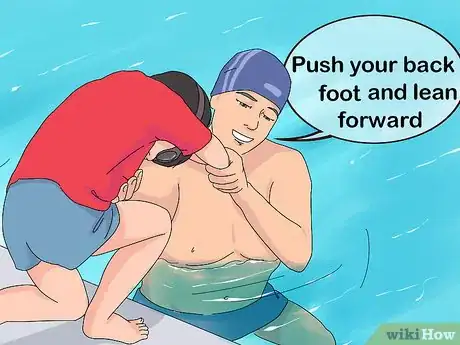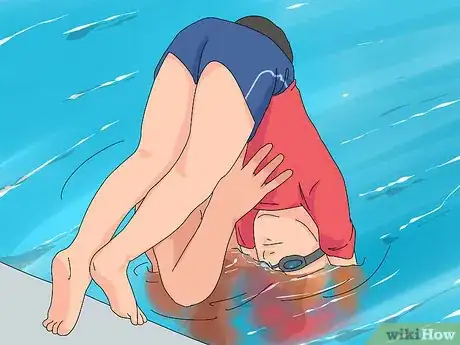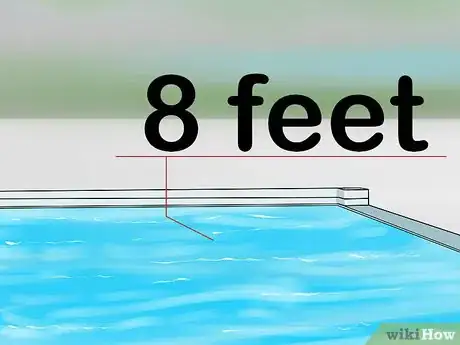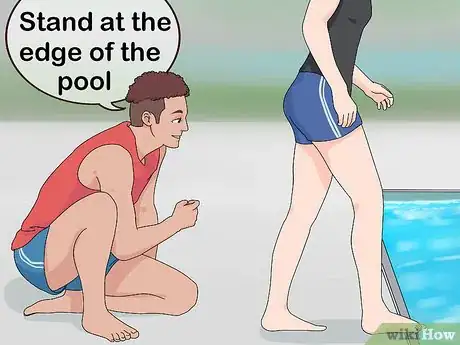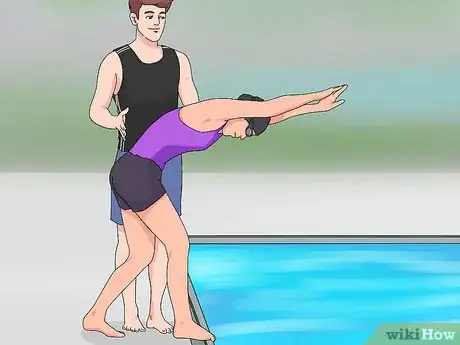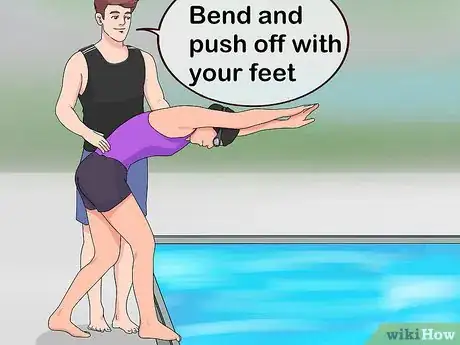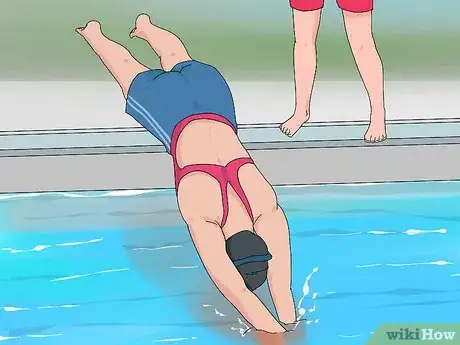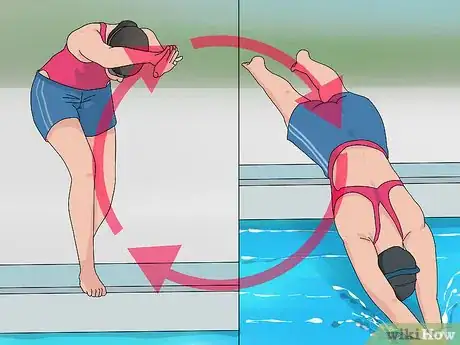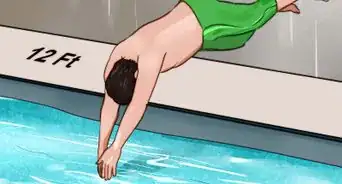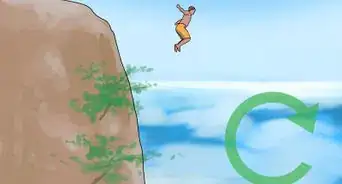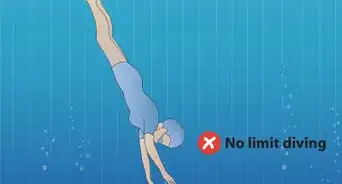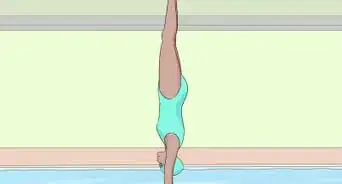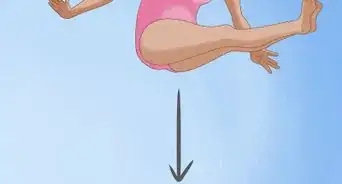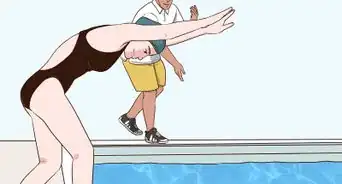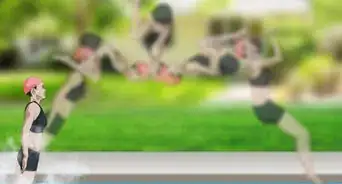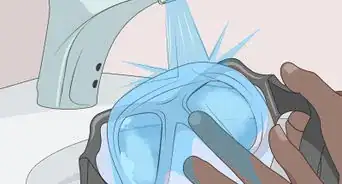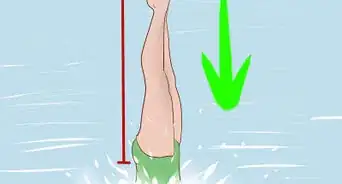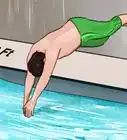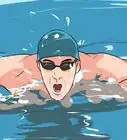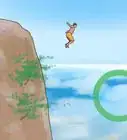This article was co-authored by Hayley Church. Hayley Church is an owner at Cooksey's Lifeguard & Swim Academy, LLC in Southern California. Hayley has been a lifeguard and swim instructor since 2007 and has dedicated her time to teaching people of all ages how to swim. Hayley and her team offer lifeguards and programming such as swim camp counselors, swim lessons, and water aerobics classes to clients of all sizes from large organizations to private homes. She received her Master’s degree in Recreation Management.
There are 7 references cited in this article, which can be found at the bottom of the page.
This article has been viewed 79,064 times.
Teaching someone to dive can be a challenge, as your student can injure themself if they haven't mastered the proper stance. Demonstrating the diving stance on land and showing them a kneeling dive can help a swimmer get comfortable with diving into the water headfirst. You can then move on to teaching them a standing dive so they learn the correct form. Always stay close to the swimmer as they learn how to dive so you can assist them as needed.
Steps
Demonstrating the Diving Stance
-
1Demonstrate the proper diving stance to the learner on land. Start by placing your arms straight above your head, keeping your biceps snug against your ears. Tuck your chin toward your chest slightly, but not to the point that it feels uncomfortable—this is important to avoid belly flops. Keep your hands on top of one another, not clasped together. Bend one knee on the ground with your foot flexed and bring the other knee towards your chest, with your foot flat on the ground.[1]
- This stance is important for the kneeling dive lesson. The arm positioning will be key later for the standing dive lesson.
-
2Have the learner practice the stance a few times. Once you have demonstrated the stance, you can then get the learner to practice it on their own. Make sure they keep their biceps snug against their ears and that they are in a kneeling position on the ground, with their arms above their head. Instruct the learner to lean forward on their front leg and push off their back leg, leading with their fingers. Have them do this a few times so they get comfortable with the motion of moving forward, as they would in a dive.[2]
- Check that the learner is comfortable with the stance on land first before moving to dive lessons by the water and in the water.
Advertisement -
3Calm a nervous student. Students who are scared are more likely to jump in the wrong way and hurt themselves. Don't let your students dive scared. Instead, reassure your student that diving is fun and safe. Offer smiles and encouraging words.
- Promise your student that you will be on hand to guide them every step of the way and provide support when they dive into the water.
- If you are teaching a child, make sure you explain the water is soft, not hard, and that they will not sustain any injuries when they land in the water.
- Confirm the learner can swim underwater on their own. If the learner does not know how to swim or has never been underwater before, you will need to teach them these skills first before they can learn to dive.
Teaching a Kneeling Dive
-
1Use a pool that is at least 8 feet (2.4 m) deep for an adult. Diving lessons should always be conducted in an area that is deep enough for the person to dive safely. For adults, this means a pool that is several feet deeper than they are tall. The deep end of a pool is ideal, as it will ensure they can dive into the water without the risk of a head injury.[3]
-
2Practice in a pool that is 4 to 6 feet (1.2 to 1.8 m) deep if you're teaching a child. If you are teaching a child, go for a pool that is not too deep, as you want to be able to support them as they dive. Make sure the pool is deep enough for them to dive in safely, but also shallow enough for you to stand.[4]
-
3Have the learner kneel on the outside edge of the pool in the diving stance. Instruct the learner to kneel with their front foot just behind the edge of the pool and their back leg bent with their knee on the ground and their foot flexed. Make sure they have their arms up above their head, with their biceps tight to their ears and their chin slightly tucked in.[5]
- To help the learner keep their chin tucked in, you can instruct them to look down at their belly button in the stance.
- As you already practiced the diving stance on land a few times, the learner should be familiar and comfortable with this position.
-
4Stand in front of the learner and support them with your arms. Position yourself in front of the learner with 1 hand grasping onto their fingertips and the other arm against the learner’s hip. Use the outside of your arm and hand to support their hips and their arms.[6]
- If you are teaching an adult, you will likely need to tread water when you position yourself in front of them, as the water will be too deep for you to stand on your own.
-
5Instruct them to lean forward until their fingertips touch the water. Once your arms are in place as support, tell the learner to push off their back foot and lean forward, leading with their fingers. Have them aim the tips of their fingers towards the water as far as they can. Make sure you support them as they lean forward so they feel stable and secure, without pushing them.[7]
- If the learner is nervous about leaning headfirst towards the water, you may need to practice this step with them a few times until they feel comfortable and know they are supported.
- Have them fall into the water as many times as it takes for them to get comfortable with putting their head in first, since this is one the biggest mistakes beginners make.
-
6Encourage them to slide into the water, using your arms as support. Keep your arm flat and secure against the learner’s stomach as they slowly slide into the water, pushing fully off their back foot. Their fingers and head should touch the water first, followed by their legs.
- Make sure you guide the learner through the water as they dive by maintaining a grasp on their fingertips as they slide into the water.
-
7Practice the kneeling dive at least 2-3 times. The learner should do a kneeling dive, with your support, several times to ensure they get the hang of it. It may take them a few times to get comfortable hitting the water head first, but with enough practice, they should be able to slide into the water smoothly and cleanly.
- You can also try having the learner practice a few kneeling dives without any support from you. Make sure you stand close by in the water so you can help the learner if they have any issues.
Teaching a Standing Dive
-
1Practice in the deep end of a pool. Once the learner has mastered the kneeling dive, it’s time to try a standing version. Always practice standing dives in an area of the pool that is 8 feet (2.4 m) or deeper, as this will ensure the learner is not at risk of a head injury.
-
2Instruct the learner to stand with their feet together at the edge of the pool. Make sure their toes are curled over the edge so they are close enough to the water.[8]
- If the learner is nervous about doing a standing dive, you can demonstrate the stance for them and then have them do it on their own.
-
3Have them get into the diving stance with their arms. Check that their biceps are tight against their ears and their hands are on top of one another, forming a straight line. They should be looking down at their belly button so their chin stays tucked in.[9]
-
4Tell them to bend at the waist and push off with their feet. Remind them to keep their body relaxed as they bend and push off so they do not slap the water too hard when they dive in. Check that their fingertips touch the water first, followed by their head and then their legs.[10]
-
5Stay close by in the water so you can help them as needed. You may need to also shout out encouraging words and reminders like, “Keep your body relaxed” and “Make sure your chin is tucked” so they maintain proper form when they dive.[11]
-
6Practice the standing dive several times. Give the learner feedback after each dive so they can improve their stance and technique. Ask them, "How was it?" after each dive to ensure they feel comfortable doing a standing dive on their own.
- Once the learner has practiced a standing dive a few times and seems comfortable doing it, you can instruct them on a diving block or board several feet above the water.
- Make sure the diving block or board is placed over an area of the pool that is deep enough for the learner, as you do not want them to risk developing a head injury.
Community Q&A
-
QuestionHi, how do I correct a dive with bent legs?
 Community AnswerJust try focus on keeping your legs straight, while still curving your dive.
Community AnswerJust try focus on keeping your legs straight, while still curving your dive. -
QuestionIs there any kind of backstroke with two arms?
 Community AnswerYes, it is called the elementary backstroke.
Community AnswerYes, it is called the elementary backstroke. -
QuestionCan I teach a child in deep water?
 Tom De BackerTop AnswererOf course, even if the child can't swim or can't swim well. You'd have to stay very close at all times to provide support. Diving in shallow water is more difficult than in deeper water (where the diver can't stand). You can also always let the lifeguards know so they pay extra attention to you.
Tom De BackerTop AnswererOf course, even if the child can't swim or can't swim well. You'd have to stay very close at all times to provide support. Diving in shallow water is more difficult than in deeper water (where the diver can't stand). You can also always let the lifeguards know so they pay extra attention to you.
Expert Interview

Thanks for reading our article! If you’d like to learn more about diving, check out our in-depth interview with Hayley Church.
References
- ↑ https://healthfully.com/teach-child-dive-14076.html
- ↑ https://www.youtube.com/watch?v=fxL7waJQnuk
- ↑ https://www.metroparent.com/daily/camps-classes/swim-lessons/diving-101-teaching-kids-dive-pool/
- ↑ https://www.metroparent.com/daily/camps-classes/swim-lessons/diving-101-teaching-kids-dive-pool/
- ↑ https://www.researchgate.net/profile/Bruce-Elliott-2/publication/14268851_Safe_depths_for_teaching_children_to_dive/links/577f37ce08ae69ab8820f9b4/Safe-depths-for-teaching-children-to-dive.pdf
- ↑ https://www.metroparent.com/education/tutors-classes/diving-101-teaching-kids-dive-pool/
- ↑ https://www.metroparent.com/education/tutors-classes/diving-101-teaching-kids-dive-pool/
- ↑ https://aquamobileswim.com/steps-for-learning-how-to-dive
- ↑ https://aquamobileswim.com/steps-for-learning-how-to-dive/
